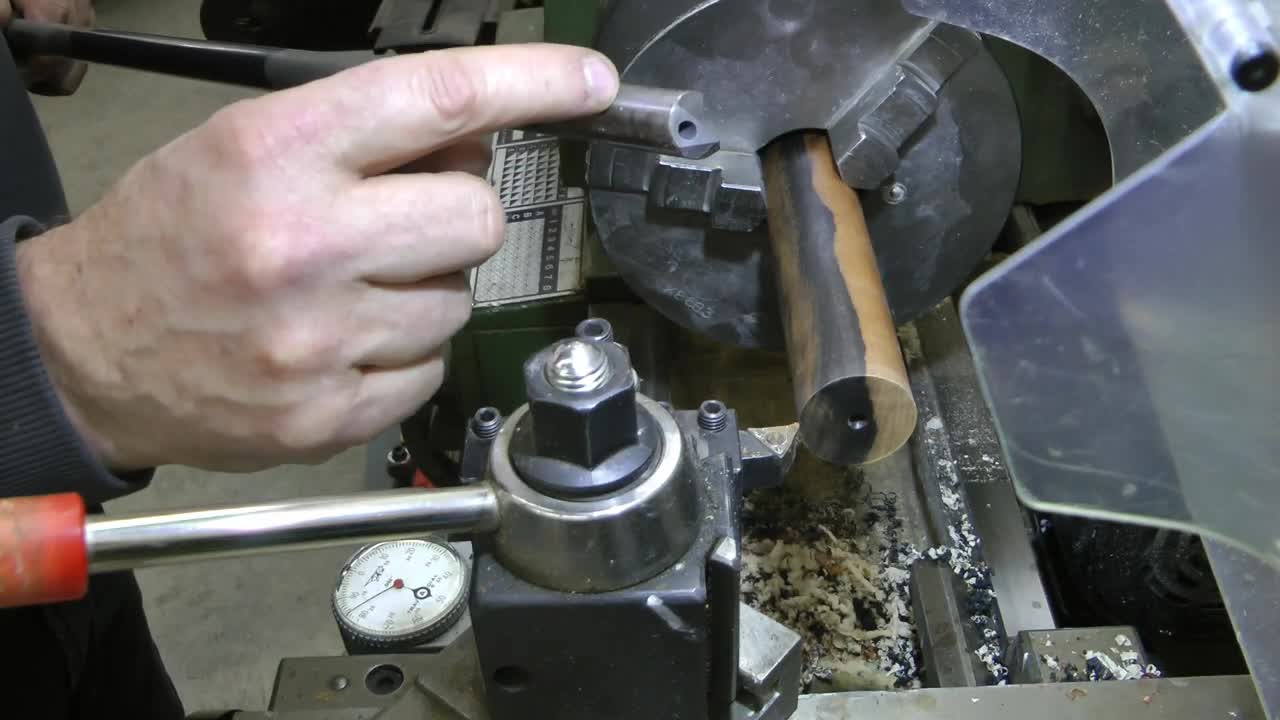Coos Cues
Coos Cues
Sitting here new years eve pondering this question.
Lately it seems like these little Chinese lathes are in vogue but still require a bunch of mods as they are not made specifically for cue building. Little taig lathes like Chris' and Todd's are but they are not really ideal either.
So I was pondering what an off the shelf lathe built exclusively for building cues would look like if money was no factor in development and being a niche market didn't matter.
This is what I have come up with so far.
A tool room type of metal lathe in a 40 inch between centers. 1.5" through hole with a built in rear chuck about 23 inches from the front. No need for much more than 5-6 inches clearance on the bed. Threading gears in quick change with a standard variable speed reversible motor. A high quality six jaw chuck. No need for different gear ratios. Just direct drive with a single belt for ease of turning by hand. Speed should go as low as about 50 rpm for easy threading and finishing and about 2k max. Built in dust collector scheme. No DRO but built in dial indicators for cross slide and carriage. Dials are way better than DRO. Anyone who has used both I can't see a disagreement. MT2 tail stock. AXA tool post.
Basically it would be like a light duty metal lathe with all the mods we like only better. I can see it in my head.
Lately it seems like these little Chinese lathes are in vogue but still require a bunch of mods as they are not made specifically for cue building. Little taig lathes like Chris' and Todd's are but they are not really ideal either.
So I was pondering what an off the shelf lathe built exclusively for building cues would look like if money was no factor in development and being a niche market didn't matter.
This is what I have come up with so far.
A tool room type of metal lathe in a 40 inch between centers. 1.5" through hole with a built in rear chuck about 23 inches from the front. No need for much more than 5-6 inches clearance on the bed. Threading gears in quick change with a standard variable speed reversible motor. A high quality six jaw chuck. No need for different gear ratios. Just direct drive with a single belt for ease of turning by hand. Speed should go as low as about 50 rpm for easy threading and finishing and about 2k max. Built in dust collector scheme. No DRO but built in dial indicators for cross slide and carriage. Dials are way better than DRO. Anyone who has used both I can't see a disagreement. MT2 tail stock. AXA tool post.
Basically it would be like a light duty metal lathe with all the mods we like only better. I can see it in my head.
